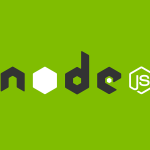Node.js has revolutionized how developers build fast, scalable, and efficient web applications. Since its introduction, it has remained one of the most popular runtime environments for building both frontend and backend solutions using JavaScript. In 2025, it continues to dominate the web development landscape because of its performance, large ecosystem, and developer-friendly design.
Table of Contents
What Is Node.js and Why It Matters
Node.js is an open-source, cross-platform JavaScript runtime built on Google’s V8 engine, the same engine that powers Chrome. It allows developers to run JavaScript outside of the browser, enabling them to build full-stack applications with one language. This means you can use JavaScript for both the client and server side, reducing complexity and improving productivity.
One of the key reasons that it is so powerful is its event-driven, non-blocking I/O model, which makes it lightweight and efficient. Unlike traditional server technologies that create a new thread for each request, Node.js handles thousands of concurrent connections using a single thread, making it ideal for real-time applications.
For official documentation and guides, you can visit Node.js Org, where you’ll find everything from beginner tutorials to advanced API references.
Core Features
1. Asynchronous and Event-Driven Architecture
Node.js operates on an asynchronous model, meaning it doesn’t wait for one process to finish before starting another. This is perfect for handling high-volume network applications like chat systems, video streaming, and collaborative tools.
2. Single-Threaded but Highly Scalable
While it uses a single-threaded architecture, it can efficiently manage multiple requests through its event loop. This allows developers to build applications that can handle large traffic loads without requiring heavy hardware resources.
3. NPM (Node Package Manager)
NPM is one of Node.js’s strongest features. It is the world’s largest ecosystem of open-source libraries and packages. Developers can easily install modules like Express, Socket.io, and Mongoose to accelerate development. You can explore thousands of libraries directly from npm.
4. Cross-Platform Development
Node.js supports all major operating systems including Windows, macOS, and Linux. Developers can build, run, and deploy applications easily across environments using containerization tools such as Docker or platforms like Heroku.
Use Cases
Real-Time Applications
Applications that rely on instant communication such as chat apps, gaming platforms, and live dashboards perform exceptionally well with Node.js. Tools like Socket.io enable smooth two-way communication between clients and servers.
APIs and Microservices
Node.js is a top choice for building APIs and microservice architectures due to its modular nature. Frameworks like Express.js, Fastify, and NestJS allow developers to build scalable and maintainable backend services efficiently.
Internet of Things (IoT)
With the rapid rise of IoT devices in 2025, Node.js is increasingly being used for managing data streams from sensors and connected systems. Its asynchronous model allows quick handling of small data packets from multiple devices simultaneously.
Serverless Computing
Platforms such as AWS Lambda, Google Cloud Functions, and Azure Functions support Node.js, allowing developers to deploy functions on demand and pay only for what they use. This flexibility makes it a preferred language for building scalable, cost-effective solutions.
Advantages of Using Node.js
- High Performance: Thanks to the V8 engine, it executes JavaScript code at lightning speed.
- Unified Language Stack: JavaScript on both frontend and backend simplifies development and team collaboration.
- Active Community: With millions of contributors, its ecosystem evolves rapidly, ensuring up-to-date libraries and security patches.
- Scalability: The event loop and asynchronous features make it easy to scale horizontally across multiple servers.
- Rich Ecosystem: NPM offers over a million packages for nearly every need, from authentication to testing.
Security and Best Practices
Although Node.js is fast and powerful, securing your application is crucial. Follow best practices such as:
- Always validate user input to prevent injection attacks.
- Keep dependencies updated and use tools like npm audit for vulnerability checks.
- Use HTTPS and secure cookies for data transmission.
- Implement rate limiting and JWT authentication for APIs.
For comprehensive security tips, visit OWASP NodeGoat an open-source project designed to teach developers about it security flaws.
Learning and Career Opportunities
Node.js continues to dominate the backend development job market. Learning it opens doors to careers in full-stack development, API engineering, and cloud-native architecture. Beginners can explore interactive tutorials at freeCodeCamp, while professionals can dive into advanced patterns through the Node.js Design Patterns book.
Final Thoughts
Node.js remains a cornerstone of modern web development. Its performance, versatility, and rich ecosystem make it a go-to solution for startups and enterprises alike. In 2025 and beyond, It continues to shape the future of real-time, serverless, and cross-platform web applications.
Also Check Rise of Deepfakes Cyber Threats – Ultimate Guide 2025






